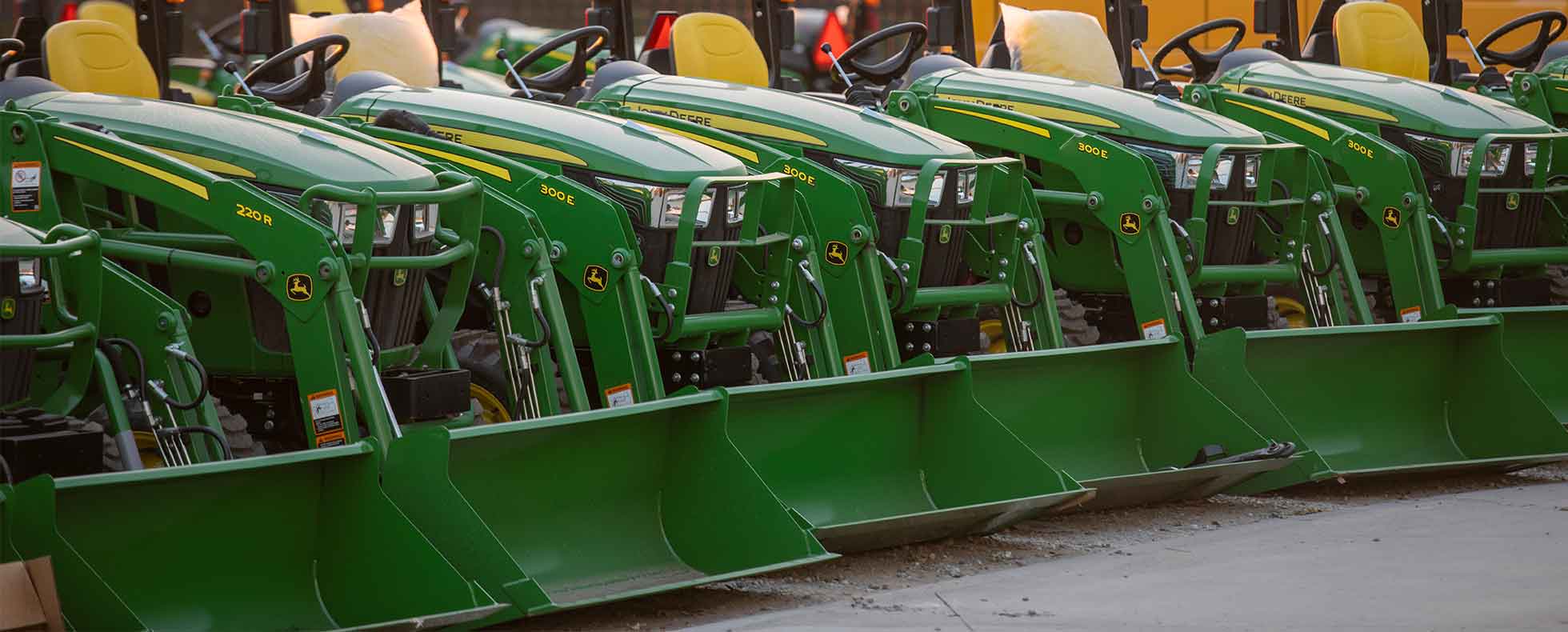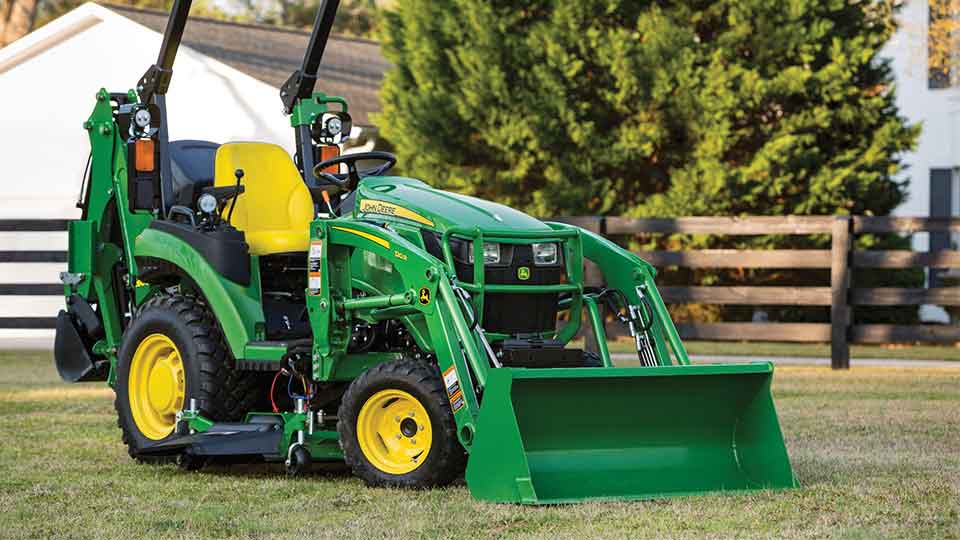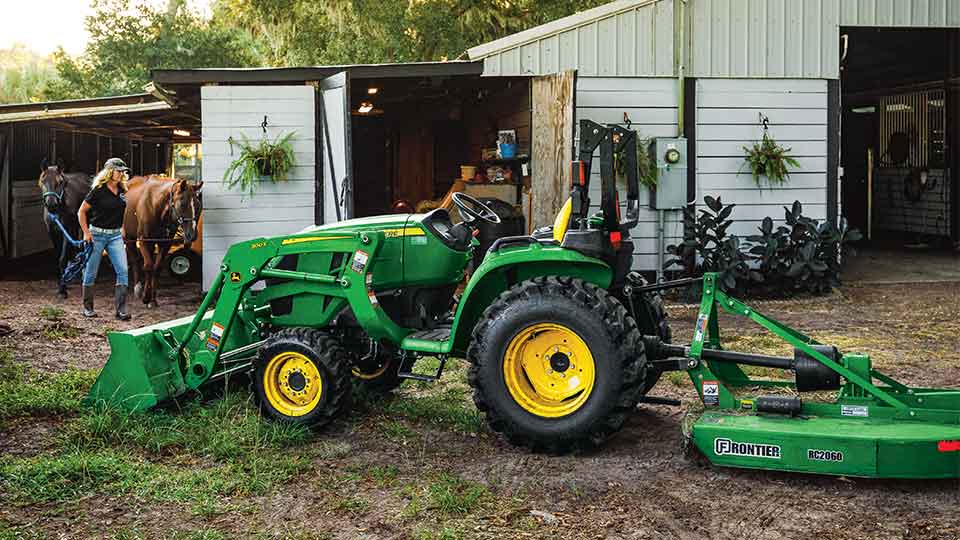
If you’ve been shopping for a compact utility tractor (CUT), you’ve probably run into the E and R Series from John Deere.
At first glance, many of these models look nearly identical, especially the 1023E and 1025R.
But under the hood, around the frame and in the seat, there are some key differences that can make or break your experience, depending on how you plan to use your CUT.
A compact utility tractor is a big investment — whether you're putting it to work on your property or using it to support your business. Choosing the right model can make all the difference in long-term productivity and satisfaction.
At RDO Equipment Co., we’ve spent decades helping customers find the best fit for their needs. With multiple series and model types available, it can be tough to know which is right for you.
We've broken down the key differences between the E and R Series in straightforward terms, answered common questions, and are here to help make you feel confident in your decision.
Ready to find yours? Take this Compact Utility Tractor Fit Assessment.
John Deere makes more than 20 compact utility tractor (CUT) models, ranging from sub-compact 23-horsepower machines to powerful 40+ horsepower tractors. Within those models, you’ll often see E and R Series options — two different tiers built for different needs.
Think of it like trim levels on a truck. Just like an entry-level pickup versus a fully loaded one, the E and R Series give you options based on budget, comfort and capability.
The E Series is John Deere’s economy line. It’s made for value — durable, capable and practical without the extra bells and whistles. If you’re focused on loader work, light landscaping or mowing, the E Series offers dependable performance at a lower price point. For example, the 3E Series supports only rear-mounted attachments, which means fewer implement options — though the 1023E is an exception with PTO compatibility and a non-fixed loader.
The R Series is the premium upgrade. It offers more comfort, convenience, and versatility. With attachment points at the front, mid, and rear, R Series tractors are built for those who want more out of their machine — whether that’s added performance, comfort in the cab or the ability to tackle more jobs.
Key Differences at a Glance:
Feature | E Series | R Series |
Price | $$ | $$$ |
Seat & Comfort | Basic | Premium (suspension seat, armrests, lighting etc.) |
Loader | Fixed (in the 3E series) | Quick-attach (disconnect in minutes) |
Mid/Front PTO | Not available in 3E series | Available |
Attachments | Rear only in the 3 series | Rear, mid, and front |

It’s common to compare John Deere’s CUTs models against one another. When evaluating whether you should purchase an E or R series model, here are some common comparisons to consider.
These tractors, as we mentioned in the intro look identical side by side. Under the hood, the 1025R has slightly more advanced specs (more horsepower, improved transmission, etc.).
The real difference between these models exists in the 1025R’s extra features, including its premium seat, toolbox and work lights.
Here’s a high-level price comparison:
The next comparison we commonly see is people comparing the 1025R to the slightly bigger 2025R. Comparatively, these tractors are both very capable, with the same PTO (18.2 HP) and 23.9 gross engine HP. However, the 2025R offers a larger frame, additional lifting capacity, is heavier and offers 900 more pounds of rear axle capacity.
Both models are premium within their series, offering advanced features and all of the bells and whistles. Often this decision comes down to the types of tasks you’ll be doing and how much power you truly need.
Here’s a high-level price comparison:
Comparing these 25-horsepower models is very common. As a member of the 3 Series, the 3025E is slightly larger than the 2025R, weighing around 800 pounds more. The 3025E is also better suited for people who need more lifting capacity, but don’t care about having a cab option or other amenities featured on an R series model. True to its class, the 3025E is a no-nonsense model designed with economy and practicality in mind.
The 2025R has a quick attach loader and PTO attachments, the 3025E has a fixed front loader which only allows for rear attachments.
Here's a high-level price comparison:
These comparisons continue throughout the E and R series model lineups. Read How to Choose a Compact Tractor: 3 Tips to learn more about choosing yours.
If you’re looking for a reliable machine to handle basic property maintenance, the E Series is a great fit. They’re more affordable than their other (comparable) CUTs counterparts.
These are commonly sold to companies and individuals who simply aren’t swayed by the additional frills and capabilities of the R series.
You should consider purchasing an E series tractor if any (or all) of these are true:
Think of the E Series as the “get the job done” option. It’s not as flashy, but it works — and it’s priced accordingly.
Over the last 10 years, we’ve sold most of our E series CUTS to individuals, city organizations, lawn companies and landscapers.
If you want more comfort, more versatility and more capabilities and can justify the price hike, the R Series is the way to go. It’s really that simple.
We find that the right R series model is perfect for:
The R Series is built for people who plan to use their tractor often and want it to be as easy, enjoyable and capable as possible.
Over the past 10 years, we’ve sold far more R series CUTs to lawn care, landscaping, school districts and farmers than E series tractors.

This is the most common question we hear—and the answer depends on how you’ll use the tractor.
If you’re only using it occasionally for basic tasks, the E Series will likely meet your needs.
But if you’re using it weekly, switching attachments regularly and managing large areas of land, the R Series will save you time and frustration—and may even last longer due to its upgraded components.
Many buyers find that the extra $2,000–$4,000 (next to a comparable E Series) for an R Series model pays off quickly for things like:
If this is your mindset, consider an R model. For a more specific price, use the Tractor Builder tool.
John Deere tractors do a good job of holding their value. R Series tractors do a bit better because of their premium features and broader appeal. If you plan to trade in or sell your tractor down the road, the R Series may give you a better return.
Now that we’ve talked through the differences between the E and R series compact utility tractor models and you have a good idea about who each is a good fit for. Which do you think is right for you?
If you’re still unsure, your next step is to take this Compact Utility Tractor Fit Assessment to help you determine which tractor type is right for you.
Once you’re ready to find a machine, you can find all of our available models on our website or by visiting your local RDO store.